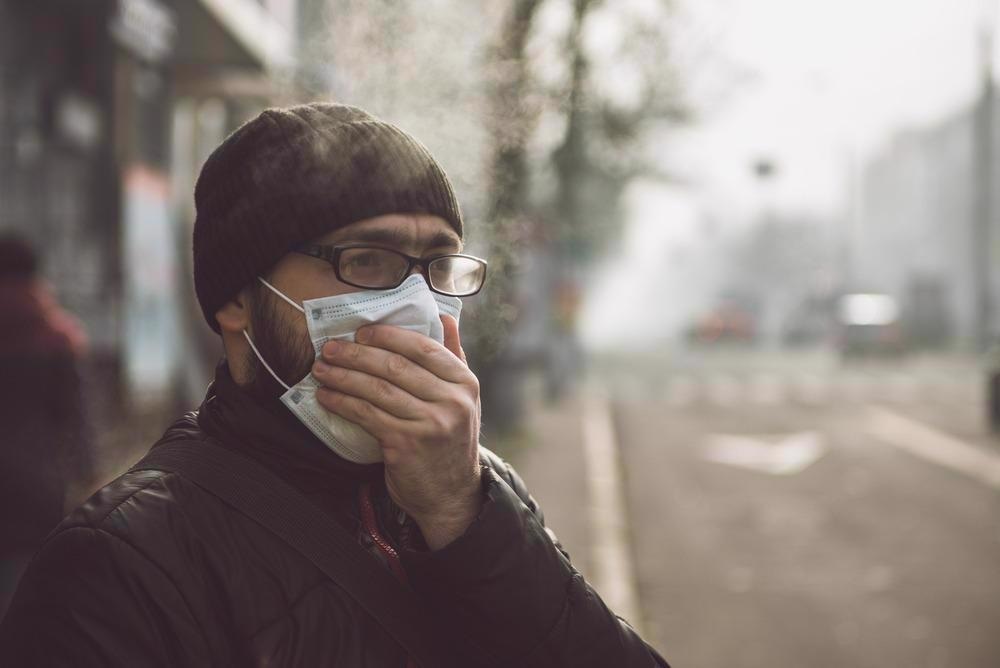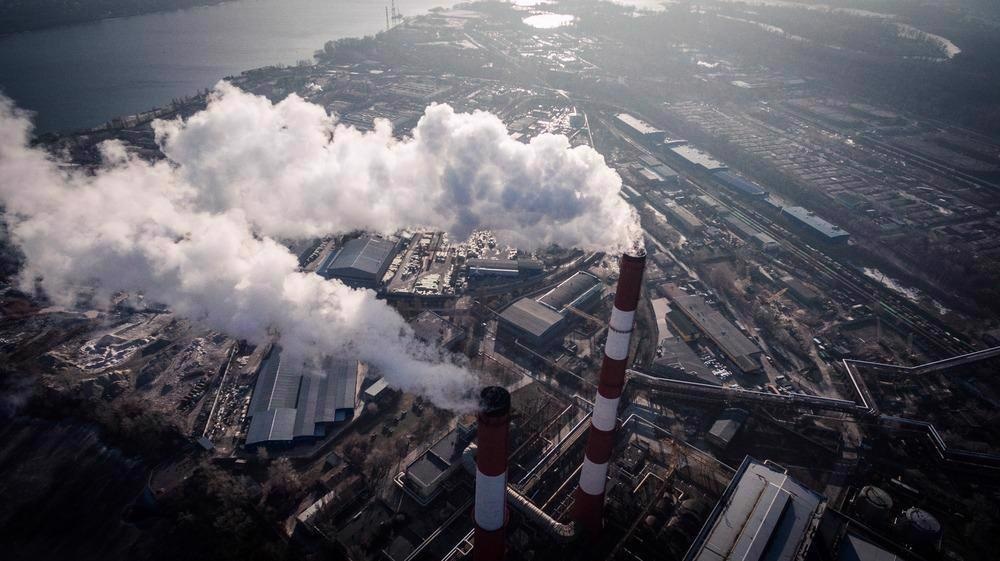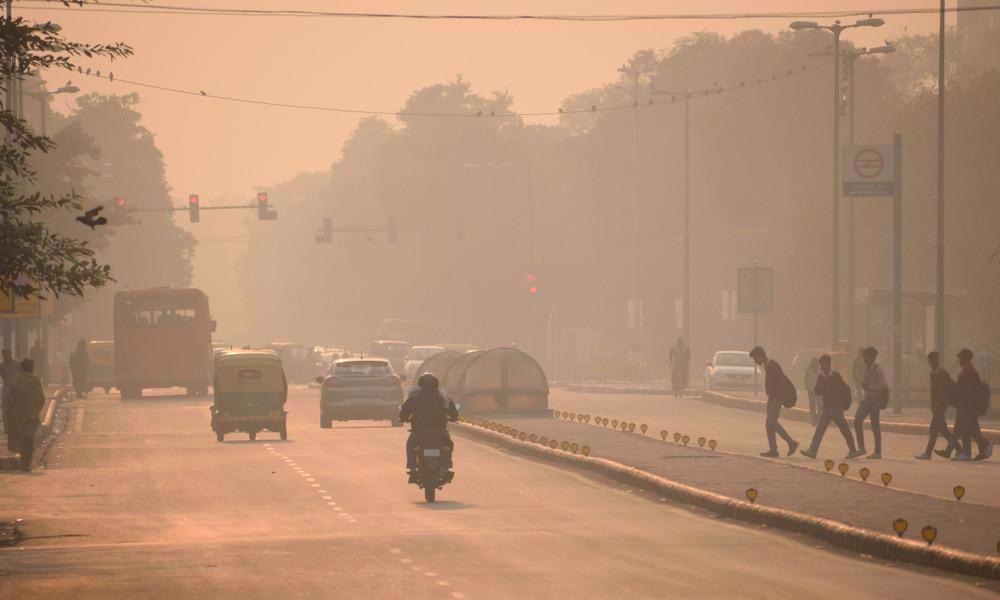In this interview, Pascal Lemberge, XRF Application Scientist at Thermo Fisher Scientific talks to AZoM about research into how air pollution is one of the world’s leading risk factors. In this interview Pascal outlines the causes of air pollution and how Thermo Fisher Scientific are helping combat this.
Please could you start by introducing yourself and your role at Thermo Fisher Scientific?
My name is Pascal Lemberge. I have worked as an XRF application specialist at Thermo Fisher Scientific for more than ten years now, and I primarily work with EDXRF – just one of the x-ray fluorescence instruments that we produce.
I mainly develop applications for use with the technology, working closely with our sales team and supporting our customers to develop and optimize their applications.
Air pollution is a global threat to human health, with much research suggesting that air pollution is one of the world’s leading risk factors for death. Can you give a brief overview of the causes of air pollution?
When we talk about clean air, we typically say that clean air consists of gases that were formed in a natural way - 99% nitrogen and oxygen and perhaps 1% comprised of other components such as argon, carbon dioxide, water vapor and small amounts of helium.
When we talk about air pollution, we refer to the presence of contaminants in natural air. Pollutants can be gases, solid particles or aerosols; everything present that should not be there.
Air pollution comes in many forms, from typical and well-known gases such as sulfur dioxide or carbon monoxide through to trace metals and toxic metals such as lead or cadmium. Many pollutants may be present, but most of these can be detected.
There are actually some natural origins in terms of the origins of air pollution; for example, air pollution could result from forest fires or volcanic eruptions.
Most air pollution stems from anthropogenic sources, however, and is primarily a result of the combustion of fossil fuels in power generation, transportation and industrial applications. This is particularly prevalent in industrialized or densely populated areas.
Other contributors to air pollution include agriculture, in terms of combustion arising from forest and wasteland burning.

Image Credit:Shutterstock/Fahroni
One of the main concerns around air pollution is its negative health impacts, with evidence that this disproportionately affects children during their development as opposed to adults. Could you talk about what kind of health issues air pollution can cause, and why we see that difference between how it affects children and adults?
Estimates provided by the World Health Organization state that air pollution in ambient outdoor air accounts for around 4.2 million deaths per year, including a range of conditions such as strokes, heart disease and lung cancer. Indoor air pollution adds another 3.8 million deaths per year to this total.
Air pollution is certainly more dangerous and has a bigger impact on young children and babies because they are typically in their early stages of development, with lungs and brains that are not fully developed yet. Therefore, the health effects of air pollution, in general, are more acute and critical.
These effects can lead to children developing respiratory conditions such as asthma or even reduced brain development or functioning.

Image Credit:Shutterstock/Helen Sushitskaya
How are air quality and pollution understood differently in indoor and outdoor areas?
As previously mentioned, the World Health Organization differentiates outdoor air pollution from indoor air quality in terms of reporting deaths.
Outdoor air pollution is typically related to industrial processes, power generation, transportation and other familiar sources, but indoor pollution is perhaps more of a third world problem than a first world problem.
For example, indoor air pollution may stem from households that are exposed to smoke from cooking stoves or fuels typically used indoors. In these areas, people are perhaps less exposed to industrial pollution or pollution due to dense city environments, but the air pollution issues may stem from households cooking with fossil fuels or indoor wood burning.
What prompted Thermo Fisher Scientific to get involved and join in the efforts to help reduce air pollution?
In general, air pollution is an important problem that needs to be tackled globally. In terms of Thermo Fisher Scientific, specifically, our mission as an organization is to enable our customers to make the world healthier, cleaner and safer. Air pollution is certainly something that we can help tackle as part of that mission.
Thermo Fisher Scientific provides instrumentation to monitor the different types of air pollution. These instruments have the potential to help contribute to ongoing work to reduce air pollution.
Which methods are typically used to analyze samples in order to measure air pollution?
The choice of method is largely defined by the type of air pollution (indoor or outdoor, for example) that we are dealing with. An important differentiator between the two is the concentration of the different components in air.
More common gases, such as sulfur dioxide or nitrous oxides, are relatively concentrated in air and usually detected in air directly via dedicated analyzers. These analyzers can be based on electrochemical sensors, photo analyzation detection, UV or infrared tools. Typically we see one instrument or one sensor set up to detect one type of pollutant or one type of gas.
Other pollutants such as volatile organic compounds (VOCs), particulate matter, aerosols or polyaromatics are present at much lower concentrations. This means that direct analysis or direct sampling is not possible.
In these cases, we usually use a sampling over time approach, ensuring that enough material is collected over time to accumulate or to pre-concentrate the different components.
Once collected, these materials are typically brought back into solution to release them from the sampling component that we use. These samples can then be analyzed with chromatography and other sensitive techniques, such as ICP-MS or EDXRF.

Image Credit:Shutterstock/LALS STOCK
What kind of pollutions can be measured with EDXRF?
EDXRF is specifically used for DLs of aerosols - particulate matter in air. Small droplets of liquids that are suspended in air typically accumulate different elements, often including hazardous elements, such as lead, cadmium, and antimony.
In order to analyze these aerosols, we must collect them overtime on a suitable filter. This is done by filtering a large volume of air over a filter to collect as many aerosols as we can. Those aerosols are then directly analyzed in an XRF instrument.
XRF instruments can identify the different elements present – these instruments are essentially elemental analyzers - and at the same time, they can determine how much of each element is present on that filter.
That information is combined with data on the total volume of air passed through the filter, allowing us to calculate the actual concentration is of those aerosols, and therefore those different elements, in air.
What does XRF add to the suite of analytical techniques for monitoring air pollution that is not available with other techniques like chromatography and mass spectrometry?
The advantage of XRF is that we can analyze the filter directly. With other techniques, we typically have to dissolve the material that is collected on the filter again before being able to analyze the samples with chromatography, ICP or any other technique.
XRF also has a very high sensitivity, with our instruments offering detection limits down to nanograms per square centimeter.
More importantly, XRF analysis is non-destructive. As there is no risk of destroying the filter in the process of analyzing it, this can be used again to obtain a second opinion, conduct analysis with another technique or repeat the current analysis to verify its results.
Overall, the most important advantages of EDXRF are that it requires very little sample preparation and that it is an accurate, non-destructive technique.
Why is EDXRF’s sensitivity particularly important when working with air samples?
Its sensitivity is especially important because the particulates and elements we are looking for tend to present at very low concentrations in air, hence why we pre-concentrate them and collect these on a filter.
When using EDXRF in very polluted areas, there is no need to filter a large volume of air to collect enough material on a filter, but in other areas where concentrations are lower, it may be necessary to collect larger volumes of air via the filter.
EDXRF’s sensitivity and ease of use allow us to differentiate measurements throughout periods of time; for example, to look at how the concentration of certain components vary during the course of a day. This is possible in some areas where it is only necessary to collect small volumes of air on a filter.
A method’s sensitivity is important because we are always looking for lower concentrations. We have learned that certain components or air pollution pose a health risk at much smaller concentrations than we had originally thought.

ImageCredit:Shutterstock/Saurav022
Do the properties of XRF also benefit other environmental applications like water analysis or soil analysis?
As an elemental analysis technique, XRF can be used in many other environmental applications, including soil analysis and water analysis.
Waste analysis is another important environmental application of XRF. XRF can be used to quickly screen incoming waste to see whether certain hazardous elements are present. This information can then be used to decide on the next step of the waste treatment process for that specific batch of waste.
Water analysis is done using XRF, but soil and waste analysis are more common and important applications for this technique.
XRF’s minimal sample preparation requirements are advantageous for both these applications, where speed is often the most important factor. Other techniques, such as ICP or chromatography, are very accurate and precise with excellent sensitivities, but these techniques typically require more complex and time-consuming sample preparation.
Over the past two years with the COVID-19 pandemic, we have seen what can be done when there is a concerted and collaborative global effort to combat a major health issue. Do you think this sort of widescale collaboration and global effort could be applied to air pollution as well, and do you think that this would be worthwhile?
I think that this potential for collaboration can be understood on different levels. We already see international and a significant exchange of information around air pollution. For example, the U.S. and the European Union maintain large networks of stations to monitor air pollution over wider areas. This information exchange leads to much better quality and more comprehensive information.
In terms of reducing air pollution in general, there has been a big effort to reduce air pollution, simply by treating exhausts from fossil fuel burning, and through the introduction of cleaner processes for energy generation and transportation – but I do think there is still a lot to be done here.
A global shift to energy production that does not involve fossil fuels will greatly improve air quality. We are looking at renewables these days, but nuclear power does not produce any pollutants while electricity is being generated.
In urban environments, I expect to see a big shift to electric cars. Electric vehicles produce far less pollution than fossil-fuel-powered cars, even though the exhaust treatment of fossil-fuel-based cars has been improved, and the pollution generated is much less than it was 20 or 30 years ago.
What do you think individual companies or organizations can do to achieve these goals, or do you think there has to be more of a top-down regulatory approach where governments introduce stricter rules around air pollution? How much of a role does legislation play, and how important is the act of monitoring and analyzing where the air pollution is in terms of enforcing this legislation?
Understanding and monitoring the problem is very important, and that is where Thermo Fisher Scientific can certainly play a key role. Our analyzing techniques, our expertise in treating and analyzing data to understand where pollution comes from and how it can be combated are ways that we can contribute from an organization level.
In terms of other companies, more and more companies are becoming aware of and working towards reducing their environmental impact in general. They are shifting towards making or using renewable products or reducing the total CO2 that they emit as a company. Companies are improving their processes, and that is going to help reduce air pollution.
From a top-down government level, it is important to implement strict regulations around the concentrations of certain pollutants in products and emissions, etc.
What are the next steps for Thermo Fisher Scientific in this area? Is there any research you are working on, or are there any areas that you want to move into within the wider field of air pollution analysis?
We will certainly be looking at further improving the sensitivity of the EDXRF technique. We currently offer good detection limits for certain heavy elements, but we are seeing an improved EDXRF sensitivity. People would like to continue using this technique because it is so convenient, but they also want to see the sensitivity improve.
This is generally true for all our instruments. We are continually working to improve their sensitivity while working to perform analyses in shorter timeframes so that results are produced faster.
Another aspect which is important is our work to improve the user-friendliness of our techniques, making sure it is as easy as possible to use these analytical techniques to produce good results.
Our goal is to see more people and labs involved and more instruments used at different levels to monitor and better control air pollution.
User-friendliness is crucial because the more people that are involved in monitoring and combating air pollution, the wider the range of experience levels and backgrounds of people using the software.
Air pollution monitoring techniques should be accessible and user-friendly if these are going to produce reliable results.

This information has been sourced, reviewed and adapted from materials provided by Thermo Fisher Scientific - Elemental Analyzers and Phase Analyzers.
For more information on this source, please visit Thermo Fisher Scientific - Elemental Analyzers and Phase Analyzers.
Disclaimer: The views expressed here are those of the interviewee and do not necessarily represent the views of AZoM.com Limited (T/A) AZoNetwork, the owner and operator of this website. This disclaimer forms part of the Terms and Conditions of use of this website.